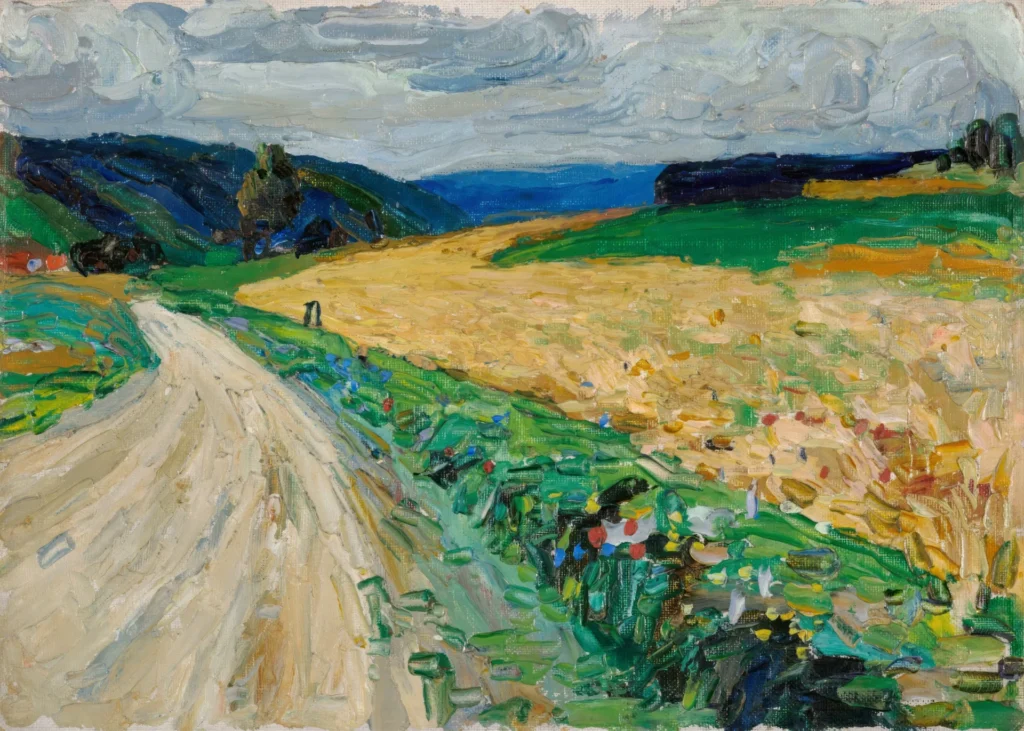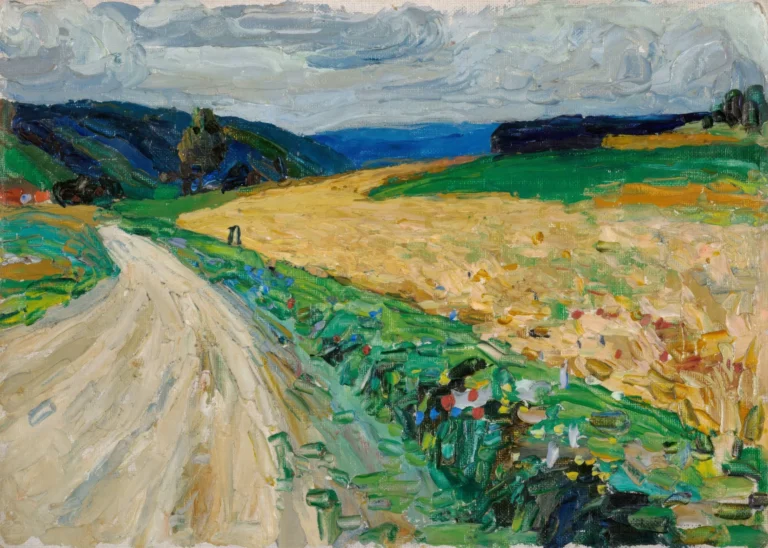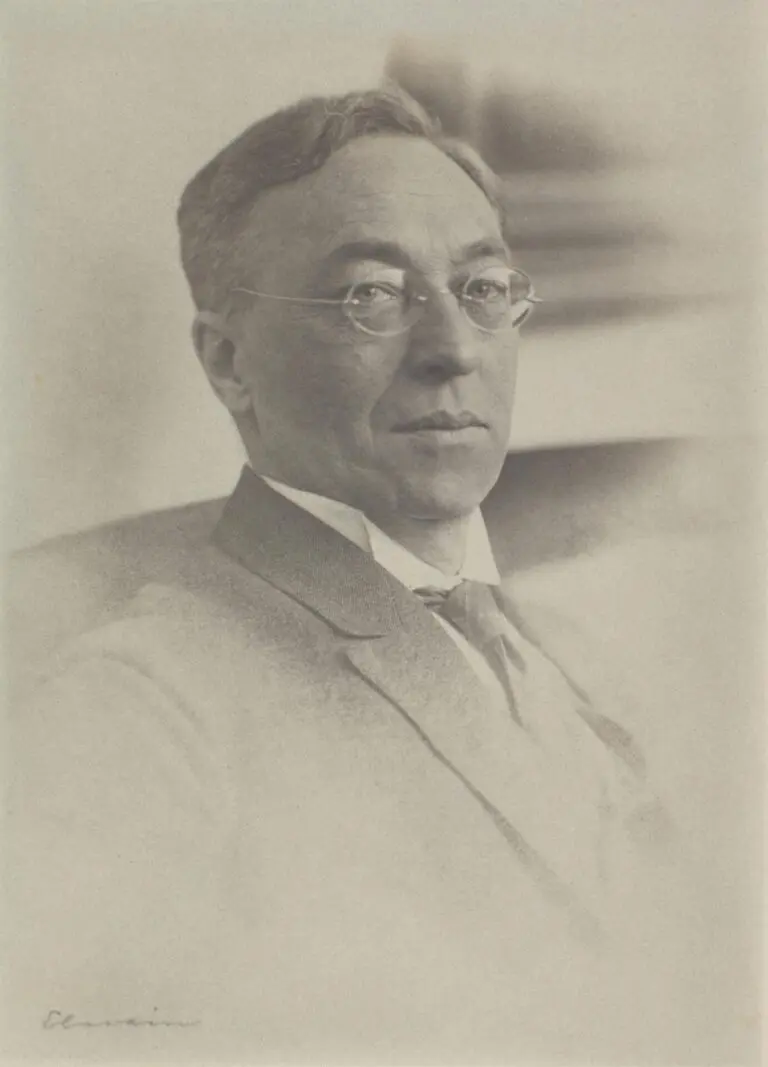Kallmünz – Nature study on the yellow stagecoach (1903)
Wassily Kandinsky's 'Kallmünz – Nature study on the yellow stagecoach,' created in 1903, is a vibrant depiction of the Bavarian landscape, highlighting a yellow stagecoach, a popular mode of transport of the time. The painting illustrates Kandinsky's shift from representational art to more abstract and expressive styles, reflecting both his personal experiences in Kallmünz and his artistic evolution. This transitional piece is celebrated for its lively colors and emotional resonance, making it a significant landmark in the history of modern art.
Year 1903
About the Artwork
In the summer of 1903, while residing in Kallmünz, Bavaria, Wassily Kandinsky was inspired by the serene natural beauty surrounding him. The title of the painting refers to this picturesque town, where the imagery of a yellow stagecoach reminded him of the simplicity and vibrancy of rural life. This period marked a critical change in Kandinsky's artistry, as he began moving away from realistic depictions towards a more expressive interpretation of the world around him. 'Kallmünz' captures not just the visual aesthetics of the landscape but also the emotional undercurrents that would later culminate in his abstract masterpieces. The painting resonates with a lively energy that reflects the joy Kandinsky found in nature, and it stands as a testament to his innovative spirit.
Did You Know
Kandinsky’s transition in style marked a significant moment in the history of abstract art, making him a pioneering figure in the movement. This painting is one of the early examples showcasing his departure from traditional forms.
Kandinsky believed that art should communicate spirituality and emotion beyond the mere visual representation. His experiences in Kallmünz, reflected in this painting, played a crucial role in shaping his artistic philosophy.
The town of Kallmünz became a vital refuge for many artists during the early 20th century, offering an inspiring environment that fostered creativity and innovation, drawing figures from various artistic backgrounds.










